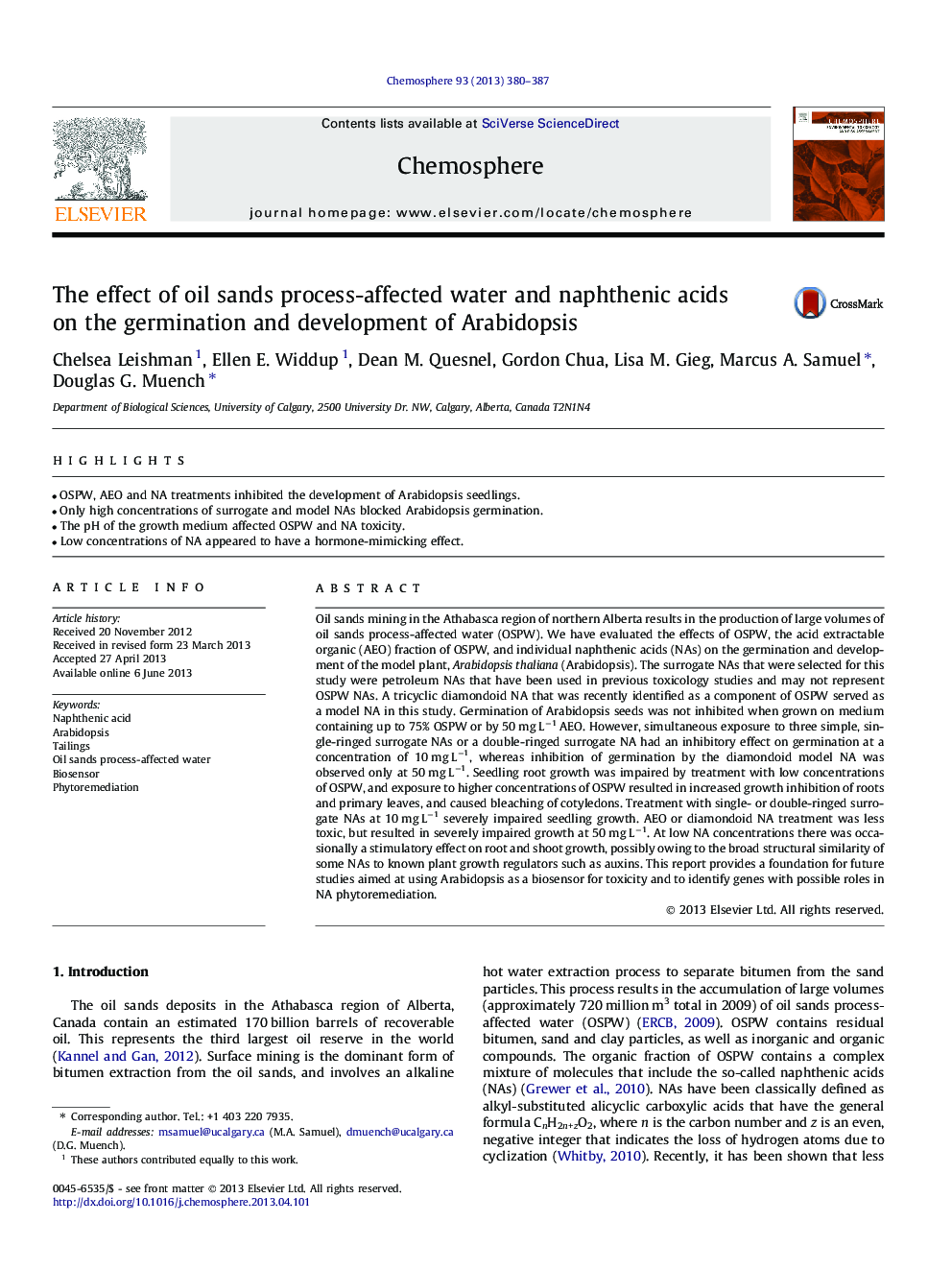| Article ID | Journal | Published Year | Pages | File Type |
|---|---|---|---|---|
| 6310569 | Chemosphere | 2013 | 8 Pages |
Abstract
Oil sands mining in the Athabasca region of northern Alberta results in the production of large volumes of oil sands process-affected water (OSPW). We have evaluated the effects of OSPW, the acid extractable organic (AEO) fraction of OSPW, and individual naphthenic acids (NAs) on the germination and development of the model plant, Arabidopsis thaliana (Arabidopsis). The surrogate NAs that were selected for this study were petroleum NAs that have been used in previous toxicology studies and may not represent OSPW NAs. A tricyclic diamondoid NA that was recently identified as a component of OSPW served as a model NA in this study. Germination of Arabidopsis seeds was not inhibited when grown on medium containing up to 75% OSPW or by 50 mg Lâ1 AEO. However, simultaneous exposure to three simple, single-ringed surrogate NAs or a double-ringed surrogate NA had an inhibitory effect on germination at a concentration of 10 mg Lâ1, whereas inhibition of germination by the diamondoid model NA was observed only at 50 mg Lâ1. Seedling root growth was impaired by treatment with low concentrations of OSPW, and exposure to higher concentrations of OSPW resulted in increased growth inhibition of roots and primary leaves, and caused bleaching of cotyledons. Treatment with single- or double-ringed surrogate NAs at 10 mg Lâ1 severely impaired seedling growth. AEO or diamondoid NA treatment was less toxic, but resulted in severely impaired growth at 50 mg Lâ1. At low NA concentrations there was occasionally a stimulatory effect on root and shoot growth, possibly owing to the broad structural similarity of some NAs to known plant growth regulators such as auxins. This report provides a foundation for future studies aimed at using Arabidopsis as a biosensor for toxicity and to identify genes with possible roles in NA phytoremediation.
Keywords
Related Topics
Life Sciences
Environmental Science
Environmental Chemistry
Authors
Chelsea Leishman, Ellen E. Widdup, Dean M. Quesnel, Gordon Chua, Lisa M. Gieg, Marcus A. Samuel, Douglas G. Muench,
